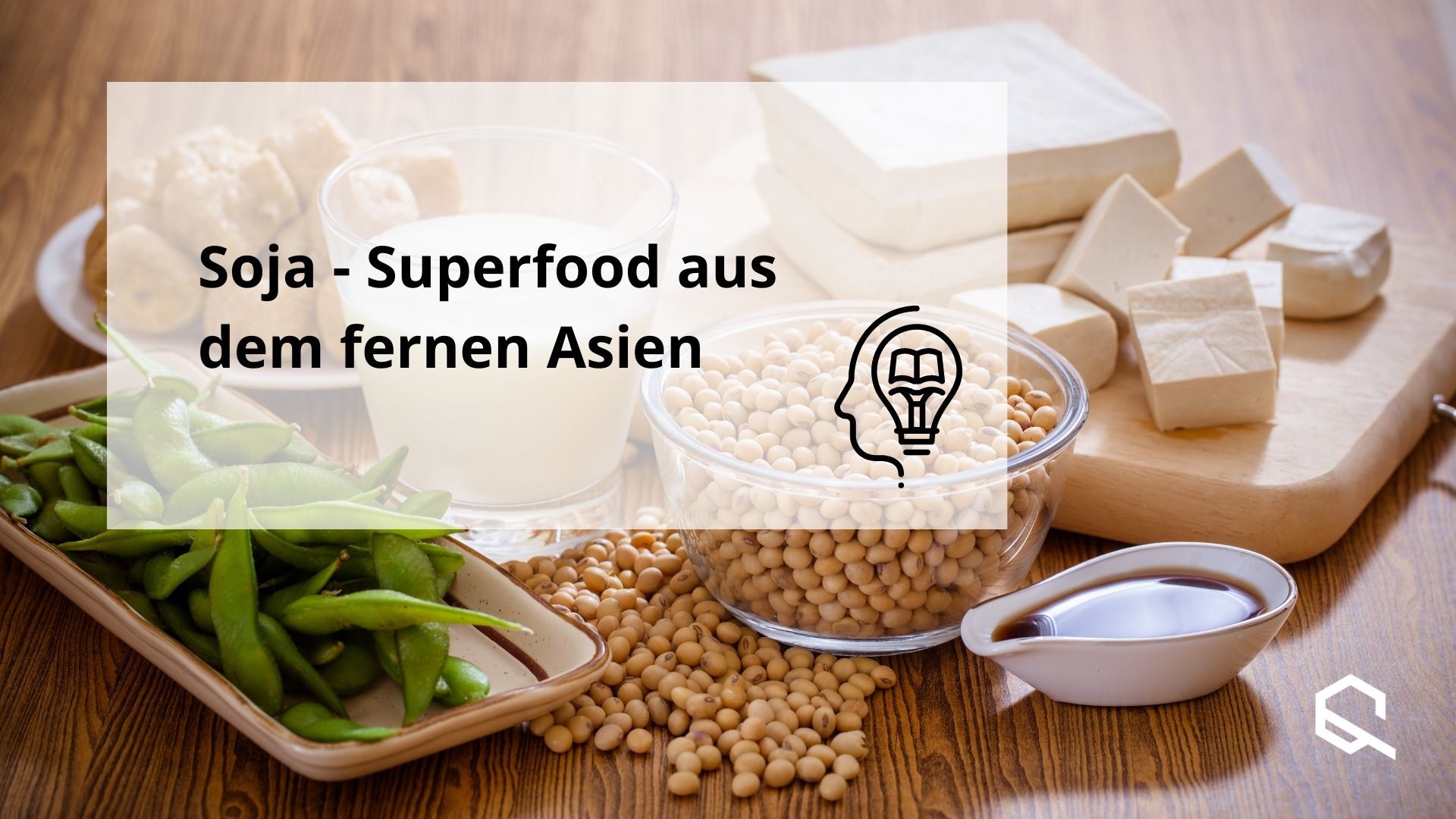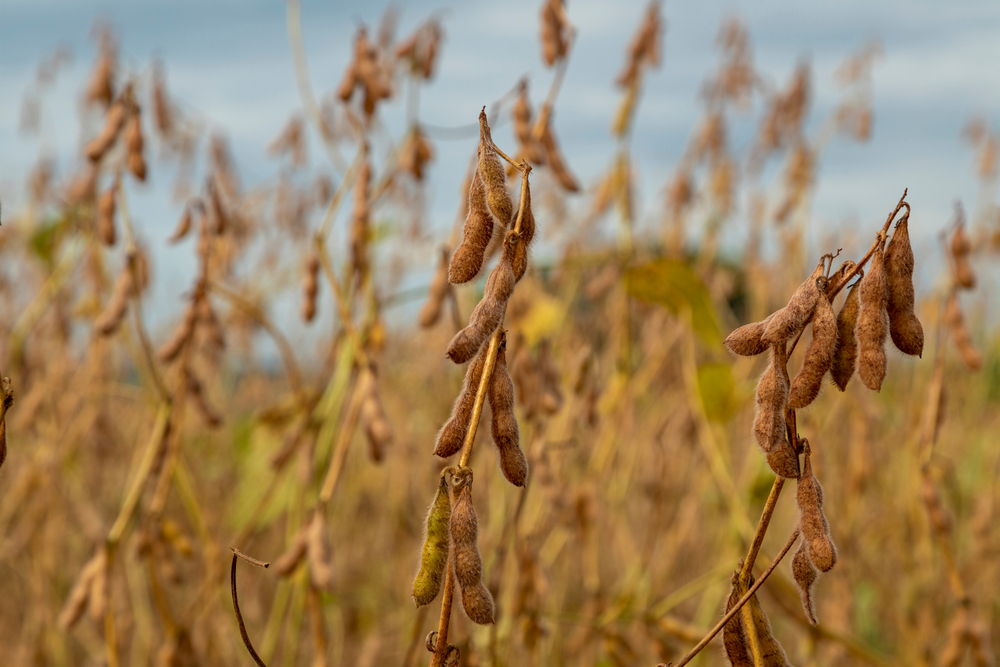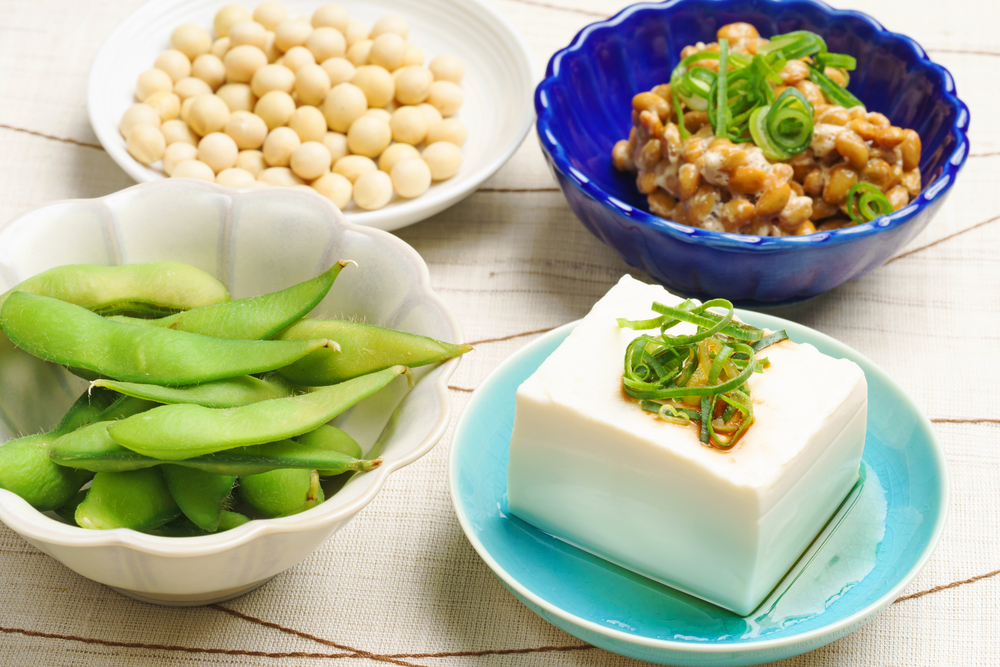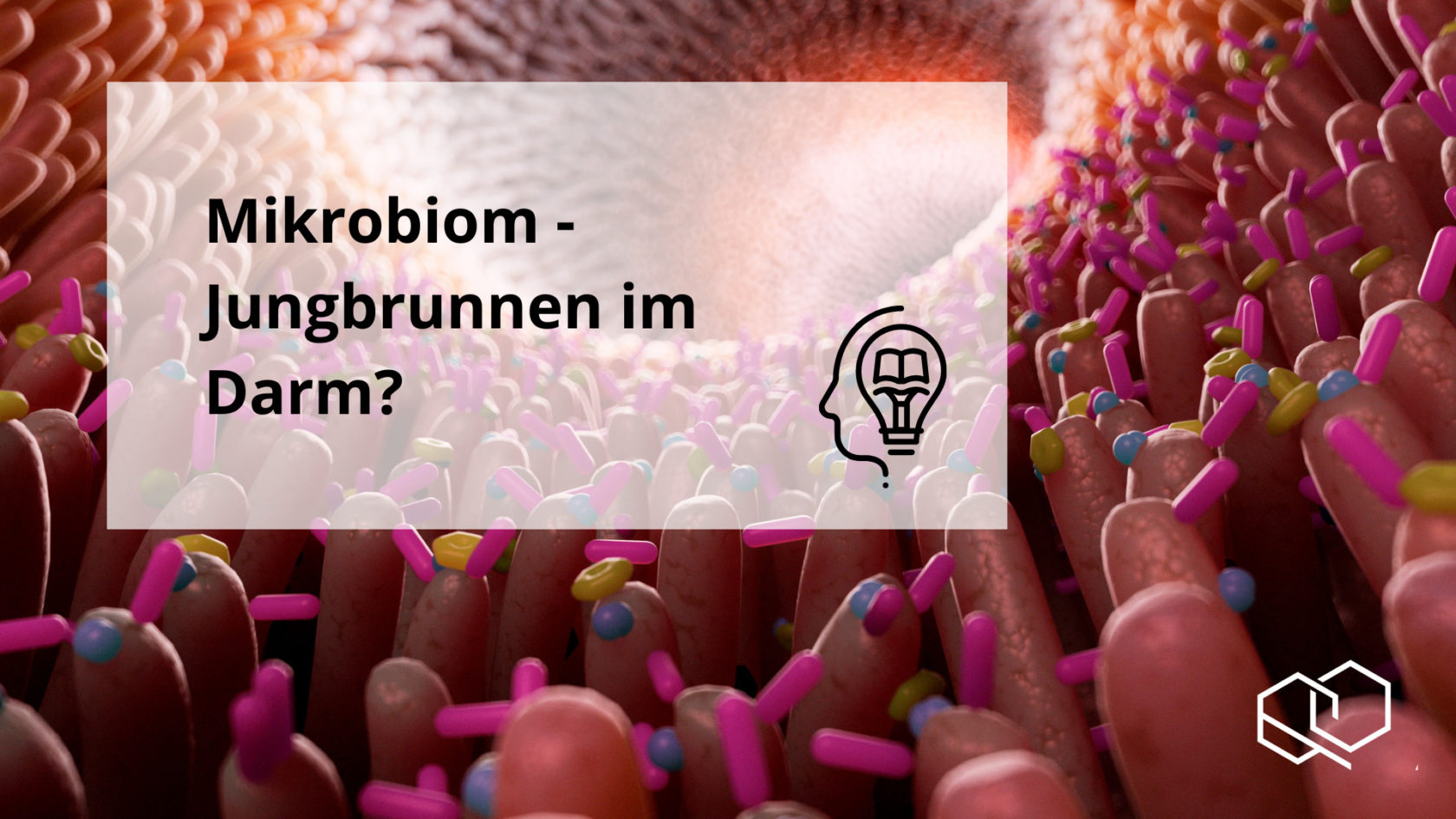Soy milk, soy schnitzel, soy yoghurt, soy sausage - soy is increasingly gaining ground as a plant-based alternative to animal products, and not always as obviously as one might think. Because the legume is also behind tofu, tempeh and miso. The product, which has increasingly found its way onto our food shelves over the past few years and is also in the limelight again and again as animal feed and due to its ecological footprint, has been present in some Asian kitchens for thousands of years - see the famous soy sauce, which comes in so many different varieties that it is easy to lose track of it all. But what is soy anyway, how is it processed, how does it affect our health and especially our longevity?
Origin far from Europe
Soy is a plant from the legume family. Depending on the species, it grows up to 180 cm high and develops legumes. Do you know edamame, the green bean-like dish that is often served salted as a small appetiser in Japanese restaurants? These are unripe soybeans. The ripe soybeans later have a slightly darker yellow to brown colour.
The ingredients of different soy products vary greatly depending on how they are grown and processed. We often consume soy as a fermented product in the form of tempeh, soy sauce or miso. During fermentation, the soybean is fermented by microorganisms. This results in a different composition of ingredients, characteristic flavours and special consistencies. Soy products are fermented by very different microorganisms - the ingredients of the fermentation product Natto are therefore not comparable with Tempeh. In addition, the protein profile of soy varies greatly depending on the variety and food, which is why many studies are conducted with pure soy protein. However, when it comes to nutrition, it is important to also consider the interactions between ingredients and the preparation method, so studies with pure soy protein are not representative of soy-rich diets. Nevertheless, let's take a look at the ingredients of the legume.
Soy as a protein supplier
Do you know soy as a popular source of protein? It's possible, because soy has the highest percentage of plant proteins (over 30%) and thus also covers all essential amino acids. And as if that weren't enough, the quality of the proteins is very close to that of animal proteins and is the most balanced compared to other plant protein sources. So if you want to use soy as a vegetable protein source, this is a very good decision, because there is no longer any need to supplement individual amino acids.
Fat
With about 15 % fat, the soybean may sound quite fatty at first. However, it is worth taking a closer look at the fats, because it all depends on exactly which fats are contained. The majority are polyunsaturated fats, and with both saturated and unsaturated fatty acids, the legume covers all essential fats. Soy is not only a great supplier of the majority of amino acids, but also of the important fatty acids.
Carbohydrates
The fact that soy is so popular as a fitness food is probably not only due to the high protein content, but also to the low amount of carbohydrates. At only about 14 %, this proportion is very low. Moreover, the carbohydrates in soy are long-chain - so-called oligosaccharides. The advantage of oligosaccharides is that they are not metabolised as quickly by the body and therefore do not have such a strong effect on the blood sugar level. However, most of them are first converted in the intestine by the bacteria there, which leads to the formation of gases.
So soy products automatically lead to flatulence? - No, it's not quite that simple. Because the work that your intestinal bacteria do to break down the carbohydrates is already done beforehand by other bacteria or processing mechanisms in most soy products. So it depends on the soy product and the way it is processed.
Isoflavones
Soy is known for the ingredients from the group of isoflavones. Isoflavones are substances that are produced in the plant itself, for example as a defense against pests. Daidzein is an isoflavone that can be metabolized in the intestine to equol. The isoflavone is processed by certain bacteria that are only found in the intestines of 50-60% of Asian people and in 30-40% of non-Asian people. Maybe you already know our article about telomeres and their connection to health and aging? According to a 2017 study, equol can increase telomere length in skin cells. Equol also acts as a powerful antioxidant. Antioxidants protect cells and thus our entire body from rapid aging, contributing to a healthy lifestyle. Want to learn more about antioxidants? Then click here.
Have you ever heard that soy contains oestrogen and that men should therefore avoid it? This is a myth that holds its own, but is anything but true. But this half-truth has to come from somewhere, because: Some isoflavones of soy have a similar structure to oestrogen - they are so-called phytohormones, i.e. hormones of plants. Due to their structural similarity to oestrogen, they can also bind to human oestrogen receptors. The concern that the consumption of soy products leads to an increased activity of the oestrogen receptor mechanisms and thus to oestrogen-like effects is unfounded, however. As is the case with many products, it is the dose that makes the poison and the amount of phytoestrogens in soy is comparatively small. In people with high soy consumption, the risk of cancer even decreases (more on this in the section on cancer risk).
Effects of soy on cardiovascular diseases
The effects of soy-rich diets on the risk of cardiovascular disease are controversial. On the one hand, nutritional studies in this field are very difficult to conduct, and on the other hand, many people with soy-rich diets are vegetarians or vegans. Thus, not only the effect of soy, but also the effect of the lack of animal products is important. However, some studies assume that the consumption of soy products reduces the risk of cardiovascular disease by lowering LDL cholesterol levels and lowering blood pressure. This is supported by a meta-study from 2019, where soy consumption reduced all-cause mortality and the risk of death from cardiovascular disease.
Soy and the risk of cancer
If you look at the rates of breast cancer in soy-consuming countries compared to Western countries, the risk is significantly higher in the latter. True, this may not only be due to soy, but also to various other dietary and lifestyle factors. Nevertheless, on the basis of this information, studies on the effects of soy on breast cancer and other types of cancer are being conducted again and again. A 2019 meta-study summarised these and concluded that while soy does not significantly reduce the risk of cancer, it does not increase it at all. In addition, the meta-study also analysed studies with soy isoflavones. According to this study, the risk of dying from breast and prostate cancer is significantly reduced when soy isoflavones are supplemented.
Quo vadis?
The results of studies on whether soy reduces the risk of certain diseases are ambivalent, but there are no published studies that soy has a negative effect when consumed in normal amounts. Quite the contrary! There is evidence that soy has very positive effects on our health and longevity. Looking at soy from a nutritional perspective, it is undoubtedly an excellent way to cover many needs while also not falling into simple-minded diets due to the variety of soy products.
Literature:
Cao, Z. H., Green-Johnson, J. M., Buckley, N. D., & Lin, Q. Y. (2019). Bioactivity of soy-based fermented foods: A review. In Biotechnology Advances (Vol. 37, Issue 1, pp. 223-238). Elsevier Inc. https://doi.org/10.1016/j.biotechadv.2018.12.001
Messina, M. (n.d.). Soy and Health Update: Evaluation of the Clinical and Epidemiologic Literature. https://doi.org/10.3390/nu8120754
Nachvak, S. M., Moradi, S., Anjom-shoae, J., Rahmani, J., Nasiri, M., Maleki, V., & Sadeghi, O. (2019). Soy, Soy Isoflavones, and Protein Intake in Relation to Mortality from All Causes, Cancers, and Cardiovascular Diseases: A Systematic Review and Dose-Response Meta-Analysis of Prospective Cohort Studies. Journal of the Academy of Nutrition and Dietetics, 119(9), 1483-1500.e17. https://doi.org/10.1016/j.jand.2019.04.011
Nakai, S., Fujita, M., & Kamei, Y. (2020). Health promotion effects of soy isoflavones. In J Nutr Sci Vitaminol (Vol. 66).
Graphics:
The graphics were acquired under licence from Shutterstock.com and marked accordingly.














